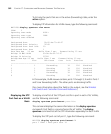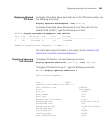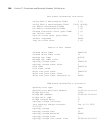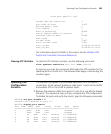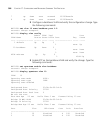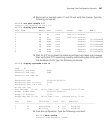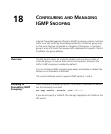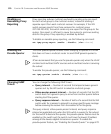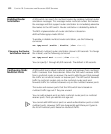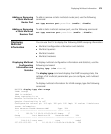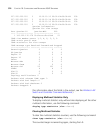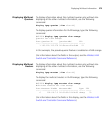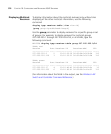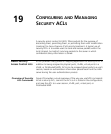
370 CHAPTER 18: CONFIGURING AND MANAGING IGMP SNOOPING
Disabling or
Reenabling Proxy
Reporting
Proxy reporting reduces multicast overhead by sending only one report
for each active group to the multicast routers, instead of sending a
separate report from each multicast receiver. For example, if the WX
switch receives reports from three receivers for multicast group
237.255.255.255, the switch sends only one report for the group to the
routers. One report is sufficient to cause the routers to continue sending
data for the group. Proxy reporting is enabled by default.
To disable or reenable proxy reporting, use the following command:
set igmp proxy-report {enable | disable} [vlan vlan-id]
Enabling the
Pseudo-Querier
The IGMP pseudo-querier enables IGMP snooping to operate in a VLAN
that does not have a multicast router to send IGMP general queries to
clients.
3Com recommends that you use the pseudo-querier only when the VLAN
contains local multicast traffic sources and no multicast router is servicing
the subnet.
To enable the pseudo-querier, use the following command:
set igmp querier {enable | disable} [vlan vlan-id]
Changing IGMP
Timers
You can change the following IGMP timers:
Query interval — Number of seconds that elapse between general
queries sent by the WX switch to advertise multicast groups.
Other-querier-present interval — Number of seconds that the WX
switch waits for a general query to arrive from another querier before
electing itself the querier.
Query response interval — Number of tenths of a second that the WX
switch waits for a receiver to respond to a group-specific query message
before removing the receiver from the receiver list for the group.
The query interval, other-querier-present interval, and query response
interval are applicable only when the WX switch is querier for the subnet.
For the switch to become the querier, the pseudo-querier feature must be
enabled on the switch and the switch must have the lowest IP address
among all the devices eligible to become a querier. To enable the
pseudo-querier feature, see “Enabling the Pseudo-Querier” on page 370.



